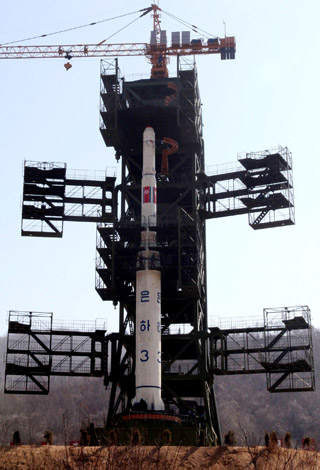A new degree of complexity has been added to the international effort to tackle orbiting debris by North Korea's emergence as a spacefaring nation.
In his annual new-year press briefing in Paris on 24 January, European Space Agency director general Jean-Jacques Dordain underscored the urgency of the debris problem - and revealed that North Korea is not, as yet, expected to take part in a landmark conference on the problem to be hosted at ESA's Darmstadt, Germany ground control centre in late April.
This eagerly-awaited event will explore potential technologies for mitigating a problem which, spaceflight experts routinely stress, threatens to deny access to many orbits critical to Earth observation, scientific and telecommunications satellites - and poses a mortal threat to manned missions, including trips to the International Space Station (ISS).
 |
|---|
Rex Features |
Dordain says the first priority is to prevent new space debris. All space agencies are working "very hard" to design launchers in which stages reaching the greatest altitudes do not explode - a common source of debris - and that can be controlled after payload delivery to ensure they are de-orbited.
North Korea's launch capability, by contrast, is relatively crude and little understood outside the hermit nation's own scientific circle.
Dordain adds that his dream is "clean space". He wants to see his first generation of spacefarers "give back to our children space as we found it. They will need space even more than we do."
As for techniques which might be used to control or de-orbit existing debris, the Darmstadt conference is expected to be a forum for significant new ideas.
ESA, for example, will test new sensor technology in April when it launches its fifth Automated Transfer Vehicle (ATV) robotic supply ship to the ISS. Dordain describes those sensors, which will be tested on approach to the ISS, as designed to enhance capability to rendezvous with "uncooperative targets".
The ATV programme ends with the launch of ATV-5 but its technology will live on as the foundation for the service module that ESA is developing for NASA's Orion multi-purpose crew vehicle, which will make its first flight in 2017 and be the key element in a transportation system the agencies' plan to use for manned missions to the Moon and beyond.
Source: Flight International


























